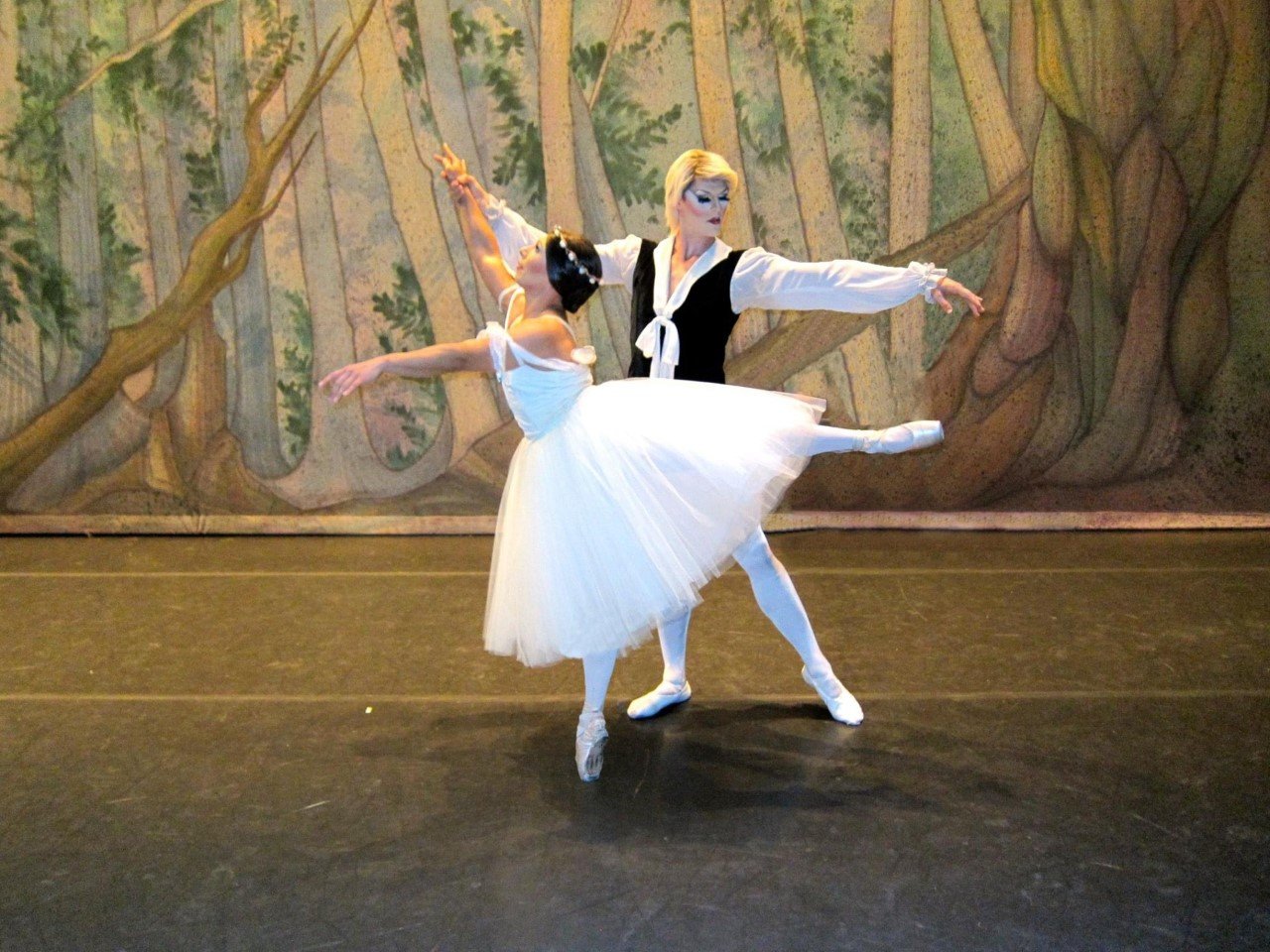Living Your Best Life at Dance Conservatory Seattle
A Conversation About Inclusivity with Co-Artistic Director Joshua Grant
By Madison Huizinga, DWC Blog Editor
Photo by Marcia Davis and Angela Sterling
Whether its codified technique, body expectations, or gendered stereotypes, the dance industry has disseminated rigid values for many years. Such expectations can limit and harm talented dancers who don’t fit such cookie-cutter molds. Joshua Grant and Christopher E. Montoya are striving to knock down these barriers and foster a supportive and all-inclusive dance environment at Dance Conservatory Seattle. Under the tutelage of local talent, DCS is teaching Seattle dancers how to “live [their] best li[ves].”
Growing up in a military family, Josh spent much of his childhood moving to different states. His dance journey first began at age three in Alabama and he later trained in South Carolina and California. Eventually, Josh’s family landed in the panhandle of Florida where he received the bulk of his dance training at Northwest Florida Ballet. He also trained at The HARID Conservatory in Boca Raton, Florida before graduating high school and moving to Seattle to train at the Pacific Northwest Ballet School. After one year in the Professional Division, Josh was offered a job with PNB, dancing professionally with the company for about four years. He later decided to spend some time traveling, relocating to Toronto to dance with the National Ballet of Canada for a while.
Desiring to explore a different form of dance, Josh joined Les Ballets Trockadero de Monte Carlo, an all-male comic ballet company that tours globally performing parodies of classical ballets. Josh toured the world with the company, traveling to Japan, Russia, Greece, France, Australia, and more, performing in male and female roles and dancing en pointe. He later returned to PNB where he dances today as a soloist.
Chris’ dance journey took a much different form than Josh’s. Chris studied at the University of Arizona before entering the professional world, dancing with companies like David Taylor Dance Theatre, Scorpius Dance Theatre, and Center Dance Ensemble, before joining Les Ballets Trockadero de Monte Carlo where he and Josh met. Josh points out how amazing it was that he and Chris were both able to find a home at Trockadero given they’re quite different dancers, both physically and emotionally.
When Josh and Chris relocated to Seattle together, Chris completed his undergraduate degree at Cornish College of the Arts and got his MFA at the University of Washington. He worked as the ballet division head and later the school director of Spectrum Dance Theater and has taught open classes and worked as the managing director for Dance Fremont. Aside from teaching, Chris has also danced with local companies like Seattle Dance Project, Men in Dance, and Jeroba Dance.
At the start of the pandemic, when the dance scene across Seattle shut down, Josh describes feeling quickly depressed and bored. Like most all people across the city, Josh recalls spending many days walking around his house wondering what to do. After some time, Sierra Keith reached out to Chris, sharing that she was considering renting a studio space and wanted to know if he was interested in teaching private lessons to some adults she knew. While Chris was busy with other work at the time, he and Sierra passed the message along to Josh who agreed to teach, holding a class of about ten people that eventually became a class of one to two as the pandemic worsened.
Eventually, the classes cultivated some buzz, as local dancers began to compete to get one of the few spots available. Having dreamt about opening their own dance school for a long time, Josh and Chris thought that this might be the opportunity to bring their dream to fruition.
Josh and Chris have both experienced struggles in the dance world throughout their careers, particularly with ballet. “We understand nobody fits into that perfect mold,” Josh points out. “And so we try to approach education and dance from that lens…perfection is unattainable.”
Chris specifically grappled with the challenges of fulfilling a rigid traditionally “masculine” role in the ballet world, as well standing out as a 5’2” Hispanic man in a predominantly white, Eurocentric realm. He also struggled with eating disorders as a way to combat weight loss to fit the mold he thought he needed to.
Growing up, Josh not only faced challenges as a gay person living in the South, but recalls training under toxic teachers who would often make hurtful remarks, and even throw things at him when he would make a mistake. “I was told I wouldn’t have a career. I was told I was a terrible dancer,” Josh remembers. “I was told that I was ‘too flowery.’ I was told that I needed to be more masculine.” For a while, he carried strict teaching traditions into the classes he taught, before Chris later pointed out that it wasn’t exactly helpful. Josh looks back on his training and wishes that his teachers could have helped him become the dancer and person he was supposed to be, instead of trying to make him become something he wasn’t.
Drawing from Chris’ graduate school research and he and Josh’s experience dancing with Trockadero, the two had also become interested in why the pointe shoe was genderized in ballet. Why is it that every time a pointe shoe is put on a man, it’s for slapstick or comedy? Such thoughts are what helped spur the creation of Dance Conservatory Seattle.
Dance Conservatory Seattle strives to knock down societal barriers by working to “encourage and empower” students “to explore their individual bodies and find their unique expressive voices.” A large emphasis is placed on welcoming dancers of all backgrounds and identities to present and perform how they desire to, particularly when it comes to defying gender stereotypes. Local performers like non-binary PNB Apprentice Ashton Edwards has credited DCS, and Josh specifically, for helping them grow more and more into themself as a performer.
Photo by Marcia Davis and Angela Sterling
Josh says that DCS aims to teach people based on who they are and not who anyone else thinks they should be. While dance nearly always has a fairly rigid means of measuring technique, DCS approaches technical skills with a more open-minded outlook. Josh shares that there’s a way to provide dancers with corrections and feedback in a way that isn’t aggressive and hurtful, but that allows a person to grow. “I think that’s where we’re going to get the best dancers of the next generation,” Josh shares of this approach to teaching.
At the moment, Dance Conservatory Seattle is chiefly concerned with getting more attendees in its classes, particularly its intermediate and advanced classes for middle and high school-aged students. DCS is also holding summer camps for ages 5 through 18. Eventually, Josh hopes for Dance Conservatory Seattle to have its own unique production of The Nutcracker, featuring a balanced representation of Seattle artists and featuring roles that defy traditional gender stereotypes. “Everything that DCS represents would be in our Nutcracker,” Josh shares. DCS’ 2700 square foot studio space is also available to rent and can transform into a performance space, where its future productions will likely be held.
Moving forward, Dance Conservatory Seattle strives to continue encouraging local dancers to live their best lives by acting fearlessly and being the kind of representation dancers across the region need. “Dance is an art form and the best way to get the truest and most successful art out of somebody is to allow them to be themself,” Josh says.


